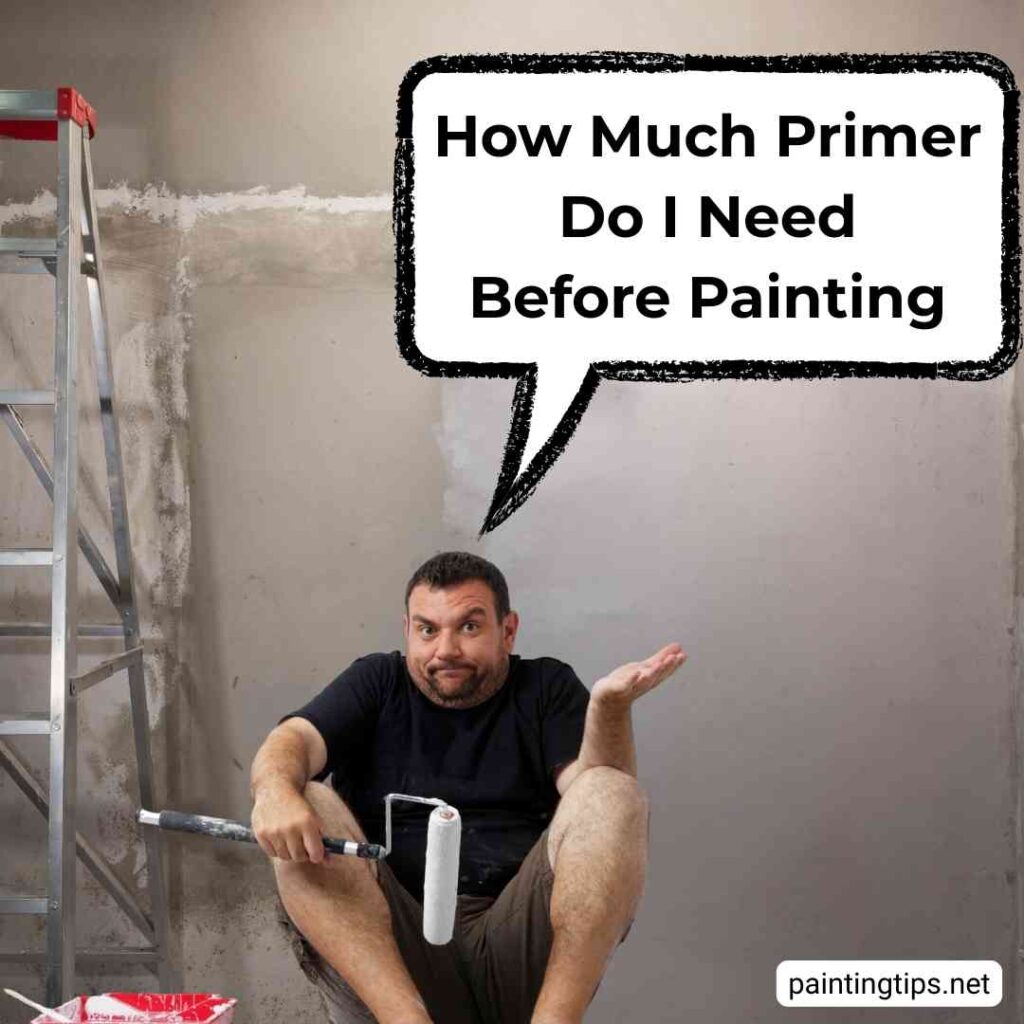Using the right amount of primer is key to achieving a smooth, long-lasting paint finish. Whether you’re painting over dark walls, fresh drywall, or a glossy surface, knowing how much primer you need can help you avoid wasted product—and poor results. In this guide, we’ll walk you through how different surfaces affect primer usage, how much primer you need for new drywall, and how to calculate the right amount for an average-sized room. From rough textures to unpainted walls, you’ll find tips to help you plan your project with confidence.
How Much Primer Do I Need Before Painting

Primer is a type of paint, but it’s usually applied in just one coat. In most cases, you’ll need about half as much primer as the amount of paint you plan to use. It’s important to make sure your primer is the same type as your paint—for example, both water-based or both oil-based—since they cover surfaces differently. This calculation only applies when the primer and paint are of the same type.
However, there are situations where you may need more primer than paint. In some painting projects, applying a generous amount of primer is crucial. Below are some tips to help you estimate how much primer you’ll need.
1-If You’re Trying to Cover a Dark Color
If you’re painting over a very dark color, you may need one, two, or even three coats of primer. In this case, buy at least as much primer as paint. This will help you save on paint by letting the primer do most of the work. “Related article: Painting without primer.”
2-If You’re Painting a Rough Surface
Rough surfaces tend to absorb more primer. So you should purchase at least as much primer as paint. If you’re priming a rough, previously unpainted surface, you might even need more primer than paint.
3-If the Surface Has Never Been Painted or Primed
Bare surfaces that haven’t been painted or primed tend to soak up a significant amount of primer. That’s why at least one coat is recommended to seal the surface before painting. A second coat may help reduce paint absorption. In this case, you’ll likely need as much primer as paint.
4-If You’re Painting a Glossy or Slippery Surface
If you’re planning to paint a glossy or smooth surface, don’t skip the primer. It helps the paint adhere better. Usually, one coat of primer is enough for this type of surface. For example, when switching from oil-based paint to latex (emulsion) paint, one coat of primer should do the job, so buying half as much primer as paint should be sufficient. For more details, check out our article on “Painting Over Oil Based Paint“
How Much Primer Do I Need for a Room
When buying primer for a room, start by measuring the walls. Take the height and width of each wall and calculate the area by multiplying them. For example, a wall that is 5 meters wide and 2.5 meters high equals 12.5 square meters. Since there are four walls, multiply this by 4, and then subtract approximately 6 square meters to account for doors and windows. The result is about 44 square meters of surface area that needs primer.
Since 1 gallon of primer covers approximately 250–400 square feet (about 23–37 square meters), you’ll need around 2 gallons of primer for a room with a 25 m² floor area. This estimate is for one coat of primer. If you apply more than one coat, you may need more than 3 gallons.
Tip: The coverage area of primers may vary depending on the brand and type. For the most accurate results, check the label on the can for coverage information.
How Much Primer Do I Need for New Drywall
New drywall absorbs a lot of primer and paint, so we recommend applying at least two coats of primer. For latex or water-based primers, wait at least 3 hours between coats. For oil-based primers, wait at least 12 hours between coats.
Since you’ll likely apply two coats of paint as well, you should plan to use about the same amount of primer as paint for new drywall. For more detailed guidance, check out our post on “Drywall Painting.”